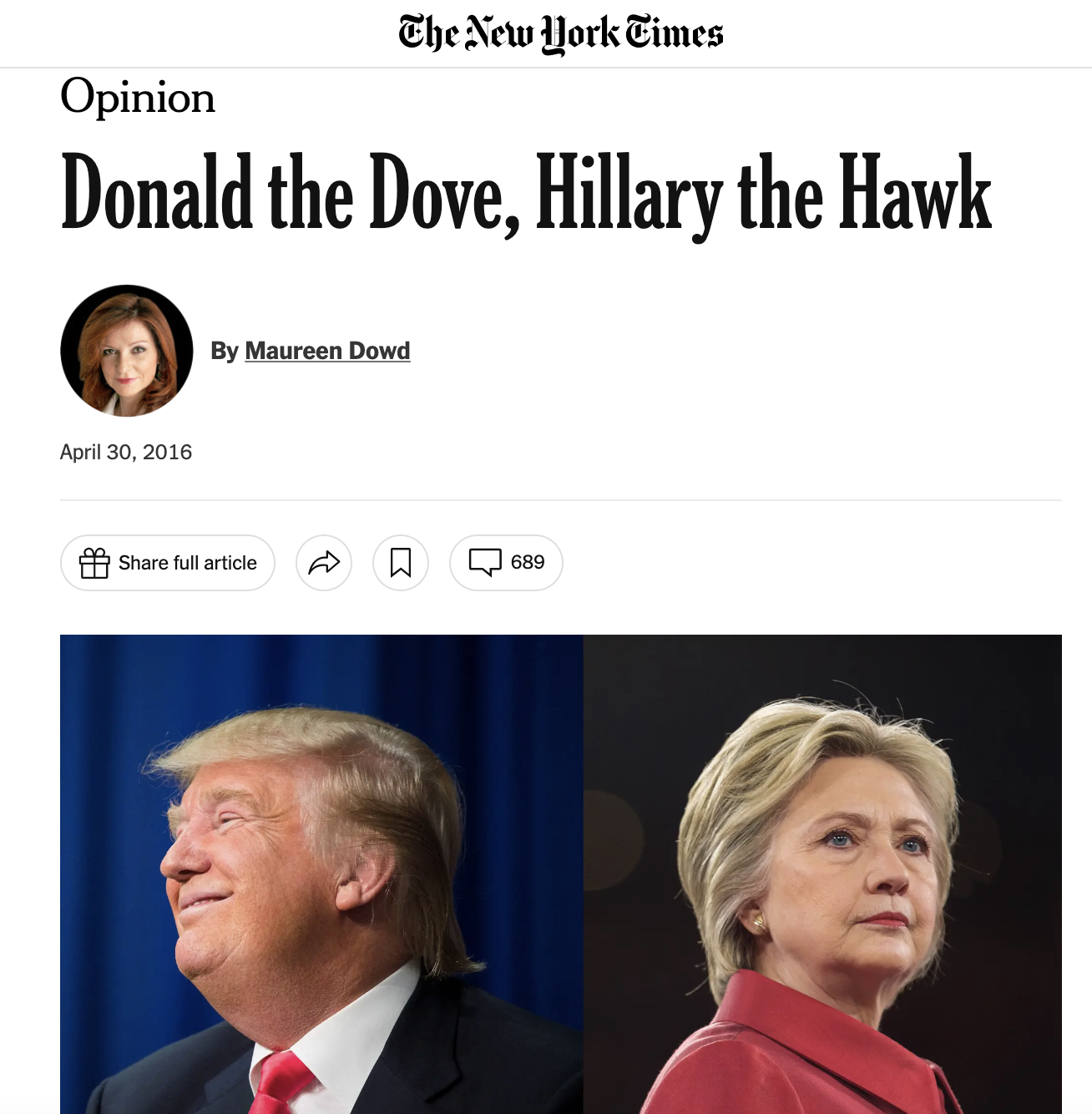The Unstoppable Incoherence of Fascism

This is the second in a series analyzing The Anatomy of Fascism. Click here to read Part One.
Our sixth grade class election was a bitter affair.
It pitted a bookish girl named Beth against my buddy Kevin, a jovial, popular class clown who surprised us all when he answered the call to run for class president. A couple kids had tried to recruit me to run for president, and I declined, citing excessive Power Rangers episodes to catch up on. Priorities.
Beth, a precursor to candidate Hillary Clinton, laid out a series of policy goals she hoped to bring to fruition during our sixth grade year. Beth told us exactly how we would raise money for a playground equipment upgrade: Through various fundraisers and matching funds from the school. Beth said she would request chocolate milk every day at lunch, not just Fridays. Beth wanted ways to earn extra recess time on nice fall and spring days. Beth, in short, had a plan for that.
Kevin wasn’t reading all that. His campaign was mostly just asking sixth graders what they wanted. No matter what the kid said, Kevin agreed to it and said he would look very powerfully into making it happen. Kevin, of course, had no intention of actually applying himself and achieving real, doable goals as class president. The little runt was pandering, and pandering hard. Where Beth had a detailed platform, Kevin had none. And we didn’t care.
The election was over, we knew, when Kevin erected the “Vote for Beth, Get Death. Vote Kevin, Get Heaven,” poster in the hallway near our lockers. No one can come back from that, I thought. And I was right.
Kevin’s hair-on-fire campaign approach worked beautifully, appealing to anyone and everyone with empty promises and shifting priorities for what, exactly, he would do as class president. Kevin was a disastrous president, but that’s not the point. He beat a much more qualified and hard-working (girl) candidate by eschewing any semblance of a coherent platform.
A Little Something For Everyone
If this sounds nauseatingly familiar to you, it should, for this is exactly how Donald Trump ran his 2016 and 2020 campaigns, and how he’s running again today as the Republican Party’s presidential candidate for life. You know and I know and the most ardent Trump sycophants know that nothing he says means anything, that he has no coherent set of politics or goals (beyond using state power against his personal enemies), and that he’ll promise anything to anyone to seize power. And we know it works. We know this utter incoherence will lead to a bare minimum of 48 percent of the American electorate supporting the Big Boy.
Sixth grade class president Kevin and Trump came to mind – to varying extents – as I read Robert O. Paxton’s Anatomy of Fascism, a book that includes crucial context for our political moment and all its little horrors.
Subscribe to Bad Faith Times and get access to the BFT Discord channel
Paxton writes eloquently about the Nazi party, before rising to national prominence in 1930s Germany, had a distinct recruitment advantage over Germany's centrist and leftist parties. The Nazi party was the first in Germany to “target different occupations with tailor-made appeals, paying little heed if one contradicted another” while traditional German political parties “stuck doggedly to the long bookish speeches appropriate for a small educated electorate."
“While the other parties were firmly identified with one interest, one class, or one political approach, the Nazis managed to promise something for everyone,” Paxton writes. By summer 1932, Adolf Hitler – with nonstop pandering and “selective” violence – had built the Nazi party “into the first catch-all party in German history and the largest party so far seen there.”
There was, per Paxton, something for everyone in the unofficial Nazi party platform, or lack thereof. Party leaders promised small business owners that their goons would crush ascendant labor unions by any means necessary, including intimidation and the aforementioned “selective” violence. They pledged to conservatives and industrial titans that they were the last and most effective way to stop socialism in its tracks – a wildly appealing prospect as socialist movements sprang up across Europe, posing an existential threat to the entrenched capitalist order. It’s why traditional Marxist analysis of the rise of German fascism holds that Hitler “was virtually created by businessmen as a kind of private anti-communist army,” according to Paxton.
Meanwhile, Nazi Party officials told working class Germans they would be a reliable defense against foreign workers and international socialism, which cared not for the native born (socialism cares for everyone, but that’s beside the point). Like all 20th century fascist movements, the Nazi party promised better pay and more protections for working class Germans, which they would magically achieve by persecuting foreign-born workers and, of course, Jewish people. This working class appeal even peeled off some of the socialist voting bloc – folks who were willing to ignore the ugliness of the Nazi party if it meant material improvement for German workers. This won’t come as a shock to those of us who have watched in horror as bad-faith leftists have either toyed with or outright embraced Trumpism as some kind of anti-establishment, pro-worker movement. Far-right politics, after all, is the new punk rock.
Paxton documents how the Nazi party recruited and cultivated the so-called Fighting League of the Commercial Middle Class – a violently anti-semitic group – as a way to appeal to both shopkeepers and their low-paid workers. It was an arrangement, according to Paxton, that didn’t sit well with the traditional conservative business magnates that had poured money into the Nazi party. But the party’s commitment to destroying the nation’s organized labor was too valuable to shun.
In Italy, some of Mussolini’s closest allies abandoned the fascist cause when Mussolini engaged in the kind of incoherent political power building that made the Nazi party such a successful “catch all” organization. Mussolini had abandoned the workers-only messaging of the early Italian fascist movement and created close ties with businessmen and middle-class property owners who had once feared Mussolini’s movement as a volatile, violent brand of (national) socialism. Early fascism in Italy called for heavy taxation of the rich and radical nationalization programs in the nation’s business sector. When Mussolini and his lieutenants bumped up against the ceiling of such a political message, they changed course and rejected “progressive and confiscatory taxation” as “fiscal demagoguery that discourages initiative.” Worker productivity, the fascists proclaimed, should be the top priority for the Italian economy. This abrupt about-face by Italian fascists was music to the ears of businessmen who had trembled at the thought of a violent movement opposed to the whims of capital.
When Italy’s conservatives recruited the fascists into their electoral coalition alongside liberals and nationalists (in order to beat back the rising socialist party), “many contemporaries thought that Mussolini’s movement was too incoherent and contradictory to last.”
They were disastrously wrong.
“They ask us what is our program,” Mussolini said in 1922, after abandoning every guiding principle that had defined fascism from 1919 to 1921. “Our program is simple. We want to govern Italy.”
It was a moment of honesty and clarity for an ascendant and dangerous political movement in post-World War I Italy: We have no politics, Mussolini said. We have no platform of which to speak. We will not be straightforward about our aims because we have none besides capturing power and crushing all opposition. And the key to it all was political incoherence.
Fascist Incoherence In The Age of Information
I’m not positing that fascist party leaders are the only politicians in history to pander to the voting public. Pandering has been at the heart of every successful party in modern history, though non-fascist parties almost always operate with some sliver of good faith. They cobble together a a cogent platform and eventually have to say they support or oppose this or that. Traditional political parties and politicians, in other words, can be defined and categorized by voters and the press.
Not so with fascists, who dutifully avoid any and all categorization efforts. It’s why today’s Republican Party is maddeningly believed to be a workers party by large swaths of the American public. It’s why Trump in 2016 was laughably able to run as the “peace candidate” against Hillary Clinton, and why – even today, somehow, some way – Trump is widely seen as a dovish alternative to Joe Biden the hawk. It’s why Trump is still able to avoid the label of vociferous abortion rights opponent.

The man who completed the 50-year right-wing plan to overturn Roe v. Wade is being treated as something of a moderate on abortion headed into the 2024 election (forget for a moment that there is no such thing as a “moderate” abortion rights position; you either oppose it or support it without restriction because, importantly, it’s a fucking medical procedure).
Media outlets, including The New York Times, are failing their critical mission of properly labeling Trump as an anti-abortion candidate who, if elected in 2024, will use federal power to end all abortion care access in the United States. How do I, a humble blogger, know this? Because far-right think tanks, Trump campaign officials, and judicial activists have been painfully clear in saying they will use the 150-year-old Comstock Act – a 19th century “anti-vice” law – to stop the mailing and use of medication abortion. A far-right judge in Texas has already ruled that the Act can be used to prohibit the distribution of medication abortion pills.
It’s all happening in plain sight. It requires no special ability or inside sources to understand what’s happening on the abortion rights front. The American right is bound and determined to end all legal abortion services as soon as possible.
Trump has said state legislatures should determine whether women have bodily autonomy within their borders. This is just another way of saying tens of millions of people will have to travel hundreds and miles and spend god-knows-how-much money to obtain abortion services they used to receive in their communities (meanwhile, eight in ten Texas women are unclear on the state’s inhumane abortion restrictions). Trump calls this the “perfect system.”
That he was reticent about Arizona’s recent total abortion ban was viewed in many political and media circles as a sign that Trump won’t continue to destroy abortion access and create a Handmaid’s Tale reality should he find his way back to the Oval Office in 2025. Arizona’s supreme court was able to end all abortion access (by saying a pre-Civil War law could take effect) because Roe was overturned by Trump’s Supreme Court justices. It’s his doing. Trump killed Roe.
Support Bad Faith Times today!
When asked about Florida’s monstrous six-week abortion ban – which constitutes a total ban since most people don’t know they are pregnant six weeks into pregnancy – Trump, without any proof, said the state’s law was “probably, maybe going to change.” It won’t. Of course it won’t. Florida's legislature and its supreme court are dominated by right wingers. But saying the law might change suggests Trump is not entirely comfortable with the ban and creates the kind of incoherent policy stance that lets him escape classification or labeling of any kind. Is he for or against Florida's new abortion law? No one knows (we do).
No one thinks Donald Trump actually cares about abortion rights. He doesn’t care about anything. That’s the thing about nihilists. Even in this Age of Information, with people ingesting more info in a single day than they would have in a whole year in a bygone era, fascists continue getting away with it thanks to incoherent politics. The internet has not led to a more informed voting populace, but rather a deeply confused, anxious, and misinformed public that can take the pick-your-own-reality approach to politics. I'll dust off this old line: Modern journalism is not equipped to handle the right wing's bad faith. They operate as if everyone is acting in good faith, refusing to see things for what they really are in this age of fragmentation.
Trump will simultaneously embrace the most ardent opponents of abortion rights – a powerful and well-funded slice of the electorate – while hemming and hawing about Republican lawmakers and judges dismantling abortion access in our post-Roe landscape. He’ll promise the world to the country’s anti-abortion forces while feigning concern about the country’s most draconian abortion policies. In this way, Trump can be a soldier of God working tirelessly to save the babies or he can be a mushy moderate who doesn't mind some access to abortion care.
We have no idea where Trump really stands on the war in Ukraine or the Gaza conflict or health care or taxes or anything else. Except that we do know these things if we simply examine the record and ignore what he says. We can be sure that Trump and his allies will muddy his views of all these critical issues in the months ahead of the election day because they understand the power of avoiding a coherent platform.
The incoherence is total. And seemingly unstoppable.
Follow Denny Carter on BlueSky at @cdcarter13.bsky.social and on Threads and X at @CDCarter13.



Comments ()